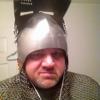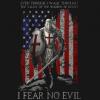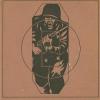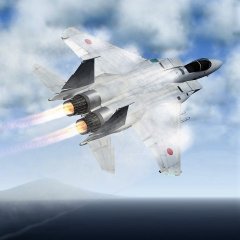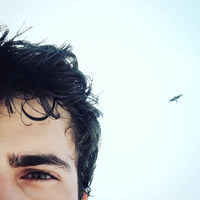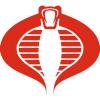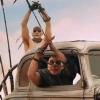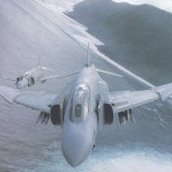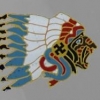Leaderboard
Popular Content
Showing most liked content on 07/02/2019 in all areas
-
8 pointsof course, you should be aware that the wish list has nothing to do with final product...thing is there will be no final product. And I believe in any case such a wish list will not help developers in any way. You can say that there will be as many wish lists as many users of SF around a globe. Because everyone would like to have something different. For instance, comparing with your wish list I do not give a crap about any new aircraft..even Su, F or any other ...B, A C...it's proven many times that community is capable of creating excellent mods without developer money support ( I mean for free). For instance, i would like to have a real dynamic campaign with a better ground campaign so you have a feeling that you are really supporting some troops. AND real DYNAMIC weather...not the same clouds for 3 hours of flight. every user will have different demands...and at the end of the day.. there will be no new game anyway. unless we will crack it.
-
8 pointsI've been a flight sim addict since the late '80s. Think I've owned and flown 90 percent of the flight sims sold since then in the U.S. and Europe. For all it's 'faults' this is the best overall flight sim I've every flown. Some have better graphics, some better flight modeling, etc... but overall, this sim allows us addicts to do easily more with this game than any other available. That's why most of us are here. I'm grateful for the game. Although a bit aged and not perfect, it's still my flight sim of choice. I find it difficult to complain about something that's given me so much fun over the years.
-
6 pointsHi Gents! TK re-released SF2 in an all in one package, including all versions, expansion packs and all DLC-s. Costs 99,99USD, compared to the individual title prices, does not seem to be a bad ratio. https://store.thirdwire.com/project_sf2_complete.htm
-
6 points
-
4 points
-
4 pointsI would be very surprised if there was even one change. This is a last grab for cash before SF2 becomes so old that it may not run on Windows anymore. They aren't selling so well at $30 a pop plus DLC costs. So this is a chance for people who held out on getting SF2 because they were happy with all the free stuff for SFP1/WoX to get all of it for a decent price. I can still remember the 2009? release which sold at Christmas for like $25 or $30 that had all of the the then available SF2 games integrated into a single downloadable installation file. Many people regretted missing that release over the years. As I already have everything released, the only motivation for me to buy such a package is just to thank TK for over a decade of fun flying Phantoms and MiGs over Vietnam and Israel. Even with all remaining bugs/limitations, this is really quite a deal when you consider how many aircraft are available and how many historical maps with missions and campaigns are available to fly over.
-
3 pointsIt's not going to happen but I've no great interest in the glass cockpit era so I'd be happy with SF3:Korea.
-
3 pointsStill, I believe a worthwhile investment. After having had an HD crash last December, and having to rebuild from the original release exes, and then running around like a lunatic trying to collect all the patches, finding out you've lost a few DLC exes... yeah, 100 bucks US; be good to have the whole set archived for such emergencies
-
3 pointsThe prologue My second planned visit to an historical Battle of Britain site was to the Battle of Britain Bunker at Uxbridge, in London's western suburbs. This was the site of the Operations Room for Air Vice Marshal Sir Keith Park’s 11 Group, which bore the brunt of the Battle. The bunker was used for other purposes after the war but is now restored, close to its 1940 appearance, as the centrepiece of a museum run by the local council, Hillingdon. You can find the museum’s website here and background on the history of the bunker on Wikipedia, here. The Ops Room ‘played itself’ in the Battle of Britain film, in 1969. So as with Bentley Priory, my trip to Uxbridge ticked three boxes – seeing the movie location, visiting an important historical site from the Battle, and seeing the museum exhibits. Uxbridge, like Stanmore for Bentley Priory, is at the end of a Tube line, two in fact. I walked from the hotel to Leicester Square and took the Piccadilly Line out to Uxbridge, the last half or so running in the open. It’s a walk of maybe 20 minutes to the bunker, though the route is a little convoluted. I was even more pressed for time that day, so I hopped on a black cab at the taxi rank in front of the station for a c.5 minute door-to-door ride. I turned up shortly before opening, which is ten till four-thirty, with last admission an hour before. This gave me an opportunity to photograph the two ‘gate guardian’ replicas and the museum exterior. The visit This Spitfire IX, finished as 5R-E of 33, Squadron with ‘D-Day stripes’, is near the bunker entrance. This squadron has no particular connection with the Battle of Britain, having served in the Middle East until returning to operate with the 2nd Tactical Air Force supporting D-Day and later operations in NW Europe, ending up with Tempests. But it's a nice replica! By contrast, the Hurricane is very much at home here, being a Mk I, RF-E, in the colours of 303 (Polish) Squadron, which operated with great distinction during the Battle, from nearby RAF Northolt. Behind it, in a brick wall and just out of sight to the right in the photo below, is a green door leading to the back garden of the house in which 11 Group's Air Officer Commanding Keith Park lived during the Battle. The inexpensive tickets were purchased at the shop/reception area just inside the bright, modern exhibition centre. There is another building next to this which looks like a large blockhouse, partly camouflage-painted, whose function apparently was, and is likely still, to house and protect the generators used to provide power to the bunker. Sadly, I didn’t have time, after my bunker tour, to see much of the exhibition centre, though I did get to take this picture while waiting for the tour to start. If you arrive between bunker tours, the exhibition, as well as the museum shop, provide plenty to do and see while waiting. I think my only company for the tour was a school group of well-behaved teenagers, Polish I think. The guide was a smartly turned out ex-NCO type, Ray, who started us off with the inevitable safety briefing, which included the fact that access was via 72 steps, down the original wartime stairway, to what was known to those who worked there as ‘the Hole’, sixty feet underground. The tour proper started, in front of the site’s small but imposing memorial to the role of the bunker, with a short history of the location. Apparently, these were the grounds of a ‘big house’ bought by the government and turned over to the Royal Flying Corps in WW1, after the locals had objected to its original intended use as a PoW camp. The bunker itself was built in the run-up to WW2 to replace the previous above ground one, to reduce vulnerability to air attack. This is the concrete-shrouded bunker entrance. Behind the blastproof steel door is a small guardroom complete with an RAF-uniformed mannequin guard, who looked rather bored. This is the view looking back the upper flight of steps from the landing onto the second flight, which leads on down at about right-angles. And here are some views of the Ops Room from ground level. With Ray delivering his informative spiel. One of the snippets of information from this relates to the map – the GSM, or General Situation Map. Apparently this was rolled up and stored somewhere else in the bunker when it was converted to other uses – a comms centre I think – for the Cold War. When eventually found for the restoration, it has deteriorated a bit and some trimming was required. However its general shape and appearance seem to be much as it was during the Battle. There are some wartime pics taken of it which show more location names, so perhaps there were different versions, even then. Here's some of the plot markers in close-up. The ones with one or two yellow flags denote friendly fighter squadrons, those without having the 'H' prefix which denotes them as a hostile raid. Apparently there were different styles of markers used at different periods. Similarly with the map, comparison with wartime photos suggests that there were also some detail differences with ‘the tote’ on the back wall – where a column using a row of coloured lights displayed the status of each squadron in each of 11 Group’s geographical Sectors. This was named after the UK’s former national horseracing betting shop chain, presumably from the resemblance to the typical ‘bookies’ display boards listing horses, courses, races and odds. Also on the tote, below the squadron status display, were separate ones for each sector indicating cloudbase height, cloud cover level and information on local balloon deployment. Along with the map, all the information is placed so as to be visible to the personnel looking down from the control dias. The map – covered in a transparent overlay which the British Army used to call ‘talc’, or perhaps it is glass or perspex - had some markings from D-Day, presumably because of the 75th anniversary. Usually, the aircraft markers on the table are laid out to show the tactical situation at the height of what became Battle of Britain Day, 15th September 1940. Ray’s talk described the operation of ‘the Dowding system’ (which seems to be a modern term, unused until recently) whereby ‘tellers’ would receive details by land line of friendly and enemy or unidentified formations from the Filter Room at Bentley Priory, passed on from the radar/RDF chain, the Observer Corps, and other sources, including the ‘Pip Squeak’ IFF system. ‘Plotters’ around the table would then place markers on the GSM and update them as more information came in, using trays of markers stored below the table edges and moving their ‘plots’ with (ideally) billiards cue-like rods with electromagnets on the end. As enthusiastically demonstrated by one of the other visitors! The Sector stations listed on the tote (which generally also had additional ‘satellite’ airfields to which one or more of their squadrons could be deployed) had their own control rooms, usually built on the actual airfield. The Group control room ran the battle, deciding which Sectors would intercept which raids and passing these instructions to the relevant Sector control room, which scrambled their fighters and directed them to the target. Looking backwards from the ground floor map, there’s a row of desks which were manned amongst others by (I believe) the ‘tellers’ who received plot details by land line before passing them onto the 'plotters' at the map table. Above their desks are the curved glass panels designed to give the Controller and his assistants, sitting at the upper level, a clear view of the map, regardless of lighting – if you take a flash picture from up there, Ray told us, you’ll see it doesn’t reflect on the glass and interfere with your view. I left my flash off throughout so as not to be a nuisance. The angled section of the upper level, to the left, is where you may remember Winston and Lady Churchill sat during their visit on Battle of Britain Day, as portrayed in the film, when Churchill asked Park what reserves he had, to be told 'None!' These are their desks viewed from the upper level; you can more clearly see the D-Day markings on the map from this angle. In describing fighter armament, Ray passed around three .303 rounds in a belt. I ended up with them last (before handing them back naturally!) and was surprised to see they were in non-disintegrating metal links. But I suppose these are less likely to come apart and get lost than the real disintegrating Prideaux links! The talk lasted for about three-quarters of an hour, after which we were ushered up to the upper level. I didn’t have much time left by this point, so what I had, I concentrated on the 11 Group controller’s area. In the upper right wall, next to the tote, is a rectangular glass panel that was installed after the Battle of Britain, to give VIP visitors ‘a room with a view’, not least King George VI who used it twice, apparently. In the foreground is the Duty Controller's station... …and this is the view while I was sitting in his chair. I managed to resist picking up one of the ‘phones and in a suitably authoritative voice, calling ’This is the 11 Group Controller. Ninety-two Squadron, intercept Hostile One Zero!’ But here I was, sitting exactly where many such an order was given, looking down at the GSM and the tote, just as the real Duty Controller did. A feeling to be savoured! In developing their justly-famous and long-lived sim, Rowan decided not quite to replicate the precise mechanics, but the feeling is uncannily similar. As I sat there looking down, I could almost hear the Rowan WAAFs, much as the real ones would have done, announcing politely but firmly ‘New raid detected…!’. Simulation and history met in my mind. But I had a date with a Premier Tours bus at Victoria (which I only just met). So I had to go back up those 76 steps without waiting for the rest of the party and without touring the exhibition area. The two gate guardians were of course waiting for me up there. My taxi driver had given me his card and was there within minutes to whisk me back to Uxbridge station for a train and tube ride back into central London. I’d had no time to peruse the museum shop so failed to pick up a copy of the book I was after there – the Haynes ‘workshop’ manual ‘Battle of Britain – RAF Fighter Command’ which ‘does what it says on the tin’ and has both wartime and modern photos of the bunker I’d just visited. Which I know, because I got a copy of the book the next day at the Imperial War Museum Lambeth, at a much reduced price to boot, on my last museum visit of my brief London break. So I’ll close these two museum visit reports with a photo of the real Spitfire on display at the IWM - despite the later-war camouflage and markings, R6915 is a real Mk Ia which flew and fought during the Battle of Britain. But there are more than ever Battle of Britain-related museums and sites to visit, and I fully intend to work my way through some more of them on future trips. It’s all rather wonderful that so many people have worked (and still work) so very hard, some as unpaid volunteers, to keep alive the history of the Battle. It's all the more vivid for being on display where it was actually fought. If you can make it to Uxbridge or Bentley Priory, they’re highly recommended. If you can't, well I hope these reports and the links in them will give you an idea of what you're missing! You can find more information about the Battle of Britain Bunker museum here: Website: http://battleofbritainbunker.co.uk/ Friends (supporters) site: http://friendsof11group.co.uk/
-
2 pointsStrike Fighters 2 Complete Edition is a collection of the entire Strike Fighters 2 series including 5 games, 2 expansion packs, and 29 DLCs all in one single, easy-to-install package! The package includes: • Strike Fighters 2 • Strike Fighters 2 Vietnam • Strike Fighters 2 Europe • Strike Fighters 2 Israel • Strike Fighters 2 North Atlantic • Strike Fighters 2 Expansion Pack 1 • Strike Fighters 2 Expansion Pack 2 • All 29 Strike Fighters 2 DLCs Player Flyable Aircraft • A-4A/B/C/E/F/G/H/K/L Skyhawk • A-7A/B/C/D/E/H/P Corsair II • A-10A Thunderbolt II • F-100A/C/D Super Sabre • F-105D Thunderchief • F-4B/C/D/E/EJ/F/J/K/M/N Phantom II • F-8C/D/E/E(FN)/H/J/K Crusader • F-14A Tomcat • F-15A Eagle/Baz • F-16A Netz • Harrier GR.1/3 • Hunter F.1/2/4/5/6/50/58/FGA.9/73 • Kfir C1/C2/F-21A • Lightning F.1/2/3/6 • Meteor F.8 • Mirage IIIC/CJ/CZ/EL/O • Mirage 5BA • Mystere IVA • Nesher • P-51D Mustang System Requirements OS: Windows 7/Vista Processor: Dual Core 2.0 GHz Memory: 4.0 GB RAM Hard Drive: 10.0 GB free space Video Card: 256 MB DirectX 10 Please note this is a repackaging of the single items into one bundle - there are no changes as known. Also still officially only Win 7/Vista. https://store.thirdwire.com/project_sf2_complete.htm You can get this Complete Edition for free if you've already purchased all the products listed above! Request Strike Fighters 2 Complete Edition for FREE!
-
2 pointsIn the wake of the news that Strike Fighters 2 is being bundled up into one and some of the comments on the forum, maybe we should list what should be in a Strike Fighters 3. I don't speak for or from the developers so don't get excited. But this can only help, urge them to please make a SF3. Here goes my list. First, the must-haves: Backwards compatibility with SF2 aircraft & terrain The ability for aircraft to target more than one target in missions & campaigns due to modern precision weapons The bug removed of telling a bomber wingman to attack a target The ability to control a two-ship formation the same as a four-ship True stealth/RCS capability for fourth & fifth gen fighters A Su-35, SU-34, F-15EX and F-35 modern warfare pak Now for the fantasy stuff... and don't ask me to prioritize this just yet: Some serious modern fleets - I'd start with the USN, PLAN, Taiwanese, Russian, British, French, Italian, Australian, and yes Japanese. More detailed maps and mission planning The option to use photoscenery in making maps. A tutorial how to write a campaign The ability to see in 3D where you place objects on the maps - Jane's Fighters Anthology had that ability in the late 1990s. Situational awareness plummeting without an allied AWACS in the air A helicopter sim mode with Seahawk, Knighthawk and Blackhawk models - for starters. Real Environment Xtreme (REX) weather goodies - even if just better textures and a simple weather control interface. But the freeware third-party mod I got are almost REX-quality. Aerial refueling Artillery that can be controlled from the strike lead or division lead aircraft... Good start, eh?
-
2 pointsI have to save some money, then. This is exactly what I was hoping for! Finally TK has made a decision that will bring value to his games.
-
2 pointsAir to Air refueling Brake Chutes as standard on aircraft that have them fitted Proper FAC missions Proper recon missions where taking actual photos is a pre requisite of the mission An Asia campaign including China, India, Pakistan etc. Backward compatibility is a must the option for proper mission start and end, Ie engine start up, taxying to the threshhold, and at the end of the mission taxying to dispersal, engine cut off working RIO proper huds with proper A-G , A-A , NAV functions CCIP those are the ones off the top of my head at least.
-
2 pointsMy girls say no. ----------------------------------------------------------------------------------------------------------------------------------------------------------------- Mandatory Screenie
-
2 points
-
2 pointsI think I'd rather sit this one out and wait and see if any of those now infamous bugs have been fixed.
-
1 pointAnd that is just the stock game out of the box! Most if not all of the AI aircraft have mods available to make them flyable, many complete with decent cockpits. Countless other aircraft are available for free. Entire mod packages for NATO, Vietnam, Korea, Desert Storm, and many others exist. Besides having an obsolete terrain engine, the main limitations of the game are the absence of multiplayer and the inability to record and playback missions. This is a great deal for those that never got into SF2. But as good as it is, I barely fly it any more because DCS World gives me nearly everything the SF series did AND has all the "missing" features like drag chutes, ejection sequences, refueling, exceptional multiplayer support, helicopters, etc. Plus it has state of the art graphics and decent VR support. Once Belsimtek releases the F-4E, my only reason to come back to SF2 is for the century series fighters and some of the Korean War types like my favorite, the F2H-2 Banshee.
-
1 pointI'll wager you'll find that's true for a boatload of ships, too. (pun intended!!)
-
1 pointI found the reason for the problem. The MaxExtentPosition= and MinExtentPosition= for the shiphull were wrong.
-
1 pointThis MaxScript generates Weighted Vertex Normals for any arbitrary geometry. It should be compatible with 3DSMAX 9 and up. No dependencies on this script are added to scene files, so your scenes can be shared with users who don't have this script installed without issues. 'Weighting' of vertex normals means that each face normal contribution is scaled by a property of the triangle. This script uses the triangle surface area and corner angle as influences. The result of this is that a small triangle will have less influence on the shading of its larger neighbor. Likewise, the neighbor will have a larger influence on the shading of the smaller neighbor. See this illustration: Author: Martijn Buijs Save Script Read more other scripet
-
1 pointWell, it's a cracking deal for someone who would just like to fly a lite sim and blow sh!t up. BTW am I the only one here not feeling offended or bothered that TK "turned his back on us"??
-
1 point
-
1 pointWell, that's interesting. After years of radio silence, TK does something interesting. I would doubt a single bug has been fixed; this is likely a simple repackaging. However, is he planning on working on a few bugs to finish the product? Who knows? I know the mobile gaming market is largely driven by quick, simple to play games. I've never played any of TK's mobile games because that's not what I use my iPhone to do. I also doubt that TK is planning new PC development. He has already expressed how he feels about the PC gaming environment, and I begrudge him nothing. His mobile gaming enterprise seems to be keeping him in the black, so more power to him. I may reinstall the SF2 series, I'm getting tired of waiting on DCS to finish Modern Air Combat and I think Ed Scio has pretty much waved the white flag on Combat Air Patrol 2.
-
1 point
-
1 point
-
1 pointDoubt it but who knows maybe TK might of seen his errors of treating us like sh!t.
-
1 point
-
1 point
-
1 point
Version 1.0.01
136 downloads
Always, shopping for more air frames due to long running conflict with neighbor Paran, in 2008 the Dhimar Air Force began operating a squadron of Atlas Cheetah Cz acquired from South Africa. I'd unzip the file into a temp folder and read the readme files. Its easy to install if you've modded your mod folders before. Basic Mod add on. Only tested on Full 5 merged. Mostly I think you'd get by with SF2 original & SF2 Israel to be safe. If you load the plane and files in you mod folders and for example and the big Arabic numbers on the tail don't show up, I'll have to find what CAB file they're in and modify the requirements. Original Work: Aircraft - Denis Oliveira Skin - paulopanz Coupi - data, cockpit, loadout.inis Decals - Spinners (SF1 Decal Pack) Ordnance Shop - 331KillerBee (Weps) Mirage IIIO - Thirdwire (DLC Store) Sounds - Thirdwire (?) This Mod by StoneAxe1492 I used Gimp for Decal and Skin modding. Notepad of course. I took the liberty of modifying the flight characteristics of this plane. If don't like my version simply use the original data file. (It may be a issue with my joystick/throttle thing-muh-jig. I often get insane roll rates with hardly any stick movement & i can't hang.) Hope you like it. Let me know if you need help or find a prob. -
1 pointno nation is suicidal, they will push as far as they think they can and then back off because of what ever face saving reason they choose to give. they probably also realize that we wont be staying to fix what we break this time around
-
1 pointI agree but thats up to the Iranians and we all know just how unstable they can be.
-
1 pointJust so everybody know Nihon Hitori 2020 is still very much on...
-
1 pointThe visit - walking the walk Before we move on, here's an amusing little Bentley Priory anecdote I remembered after reading a brief mention of it on the museum website. As recounted in David Irving's Rise and Fall of the Luftwaffe, in October 1938 that force's principal architect, General Erhard Milch headed a delegation which visited France and England. During the latter visit, Milch '...livened up one formal luncheon held in his honour at Fighter Command headquarters [Bentley Priory] when in his own blunt way he appealed umprompted to his hosts. 'How are you getting on with your experiments in the radio detection of aircraft approaching your shores?' Glasses clattered on the floor and a very red-faced air vice-marshal tried to laugh the question off. But Milch persisted that there was no need to be coy. 'So are we, and we think we are a jump ahead of you.' Notwithstanding that, German intelligence during the Battle seemed not to appreciate how well the radar network was tied into a whole defensive system. But there I was, in the very place this exchange played out, just over eighty years later. As head of Fighter Command and the principal architect of the air defense system, Dowding might have been the 'red-faced air vice-marshal' of Irving's account (supplied directly by Milch). I suspect the description of embarrassed surprise is over-egged for effect, although the reticent Dowding could reportedly become quite animated when talking about something important to him. Anyhow now was my chance to walk in his footsteps, out onto on the veranda at the front of his office at Fighter Command HQ. Here's that clip from the film that I had in mind: And here are some of the pictures I took of the same scenes, fifty years after they were filmed. I had to walk up the outside steps to get onto the veranda, as you can't step through the door of Dowding's office. I went down the steps into the Italianate gardens and crunched along the gravel paths that Dowding, probably Milch, and many other famous historical figures must have trodden. Dowding lived close by with his sister and apparently frequently walked to work, chatting in these grounds with his friend and neighbour General Sir Frederick Pile, head of Anti-Aircraft Command. Had I looked more closely at my museum map, I would have realised I could have followed a path off to the right in the above pics, which led to the entrance to the Cold War bunker, which you can see in this clip shot in 2011 before the site was preserved as a museum. The Hurricane displayed outside in the above clip looks like the same one that's there today, albeit in post-Battle of Britain colours back then. The Spitfire is possibly another replica - of a Mk VIII or IX by the look of it - not the real aircraft I read it was elsewhere. The stained glass window you can see from about 1:02 is featured on a fridge magnet I bought as a memento of my visit in the museum shop. My other purchase there was a copy of Geoffrey Wellum's 'First Light' which is proving a good read - it was the subject of this BBC TV dramatization, which is also definitely recommended: Finally, it was time to go, but this was a visit I'm very glad I made and will always remember. This was not merely an interesting museum, but one on an historic site which positively oozes...well, history! The Bentley Priory museum I would highly recommend to anyone contemplating a visit. If you can't make it, I hope this account will at least convey something of the impact the visit had on me. Tally ho!
-
1 pointThe prologue 'Not really a mission report', you might say, but I was 'a man on a mission' in this case, and there is a strong combat sim connection! Like reading up on the subject, a museum visit can be a great way of deepening your ‘feel’ for the historical background of a sim you’re playing...thereby enhancing that semi-mystical quality called 'immersion'. I’ve been playing A2A’s most excellent Battle of Britain II solidly now for about six months, which has spurred me to expand my stock of books on the subject. And I enthusiastically grabbed the chance proffered by a short break in London last week to pick and plan some related museums to visit. Online research soon identified the two I most wanted to see and this report records and illustrates the first of my visits. I hope it and the one to follow will be of interest to anyone contemplating doing likewise, or those too far away to do so, and a useful supplement to the museums' own sites - which for Bentley Priory, you can find here. The 1969 film Battle of Britain has many memorable moments. For me, one of those moments is right at the end. Lawrence Olivier, playing Air Chief Marshall Sir Hugh Dowding - head of RAF Fighter Command and architect of the defensive system that nowadays bears his name – walks out of his office at Fighter Command HQ and onto the veranda. The tide has turned and he can sense his battle has finally been won. He looks out across the beautiful gardens, south towards London, like his own command bombed but not broken. The camera follows his gaze, up into the blue sky, as Ron Goodwin’s majestic main theme wells up. Churchill’s famous tribute to ‘the Few’ is displayed, and the credits begin to roll, starting with the Battle’s real participants and their casualties. The scene was of course filmed at the real HQ at Bentley Priory. Finding that it was now a museum, open to the public, I was quietly thrilled to think that I might see Dowding’s office, stand on that veranda and savour that same view – walking in the footsteps not only of ‘Sir Larry’, but also of Hugh Caswall Tremenheere Dowding, the great man himself. I’ll try to avoid duplicating here what you can readily find in the museum’s own website, and concentrate on what I saw when I went there. I had three nights at the St Giles Hotel at the bottom of Tottenham Court Road, a few yards from the junction with Oxford Street with the Centre Point block just across the road and the Post Office Tower behind the hotel on the other side. Bentley Priory was open ten till five (four, October to February) but only on one of the days of my stay – the Monday – so it was then, or never. I took the London Underground aka ‘Tube’ from Bond Street station a short walk away. Bentley Priory is in Stanmore, right out in ‘the leafy suburbs’, and the last station on the Tube’s Jubilee Line. You can walk the last mile or so, mostly uphill, but I jumped on a number 142 double-decker London bus at the stop immediately outside Stanmore station. The whole journey took over an hour each way, with about the last half of the Tube part out in the open, which is a bit less wearing, and more interesting, than being whirled along noisily in a tunnel. As a sop to any railway fans reading this, this is Stanmore station looking north. The station is used by conventional ‘overground’ trains as well as the Tube, all third rail electrified and operated by London Transport – or Transport for London aka TfL, somebody having decided such a rebrand was worth the cost and effort. Marketing and design companies must have seen them coming, as the saying goes. Those bright red buses can be seen a long way off. The visit - outside in The 142 service bus’s PA announces the museum stop, so I had no worries about when to hop off. The problem came when I turned left onto the drive leading to the museum, for it was sealed behind closed and apparently locked black iron gates. A carload of visitors prompted the (civilian) security chappie to emerge from the nearby gatehouse, letting me in too and allaying my fears that I had got the opening days wrong. The drive curved off to the left, and coming around the corner I stopped to savour my first real-life view of the former Headquarters of RAF Fighter Command. The building is surrounded, mostly at a respectful distance, by upmarket housing built or clad in similar fashion (sandstone?) to the Priory, and you can’t wander off too far before seeing signs saying ‘Residents only’. Apparently, like many such buildings, the Priory was camouflaged dark green and dark earth on the outbreak of World War 2, but this wasn’t reproduced in the film and the museum has sensibly chosen not to deface the fine building for the sake of turning the clock back. Of course, my first stop was the two aircraft prominently displayed outside. There seems to be a significant market for fiberglass replica Spitfire and Hurricane ‘gate guardians’ these days, and my first few minutes were spent photographing these two at Bentley Priory. The Spit apparently replaced a real one, of a later mark, since restored to flying condition. The replica looks well, although purists might find minor faults here or there. I wasn’t interested in rivet-counting or nit-picking. Those over-wing Type B roundels do look a tad small, though... Having built the Revell 1/32 Spit in the 1970s, I naturally recognised the squadron codes as belonging to 610 ‘County of Chester’ Squadron. There’s a plaque in front telling you the replica represents the aircraft flown by Cyril Bamberger. On the other side of the big pine tree is the replica Hurricane. As the plaque says, this one is in the markings of a machine flown during the Battle by Pete Brothers of 32 Squadron, complete with that unit's oversized code letters. Even though I knew these weren’t real aircraft, they made a suitable impression and of course I could not resist getting plenty of pics, despite the overcast skies. Stepping into the museum, this is the impressive sight that greeted me. Helpful staff on a desk ahead and right took my modest fee, gave me a site map and suggested I start by viewing the c.10 minute introductory film, run as required as visitors arrived. The staff immediately understood me when I described wanting to walk the scene at the end of the Battle of Britain film and I accepted their suggestion to ‘fly a holding pattern’ in one of the fine adjacent display rooms while waiting the few minutes for the next showing. The intro film is projected onto a wall just in front of you and is conventional – until it cuts to describing the role of Dowding. Suddenly, camera obscura style, the light goes on in the previously blacked-out room on the other side of the wall-screen. Behind the projected images, you can now see Dowding’s actual office, complete with his desk, green desk lamp and other fittings of the time, as featured in the BoB movie. A uniformed actor speaks to some of Dowding’s pronouncements as the story continues, ending with the Battle won and the great man being bidden ‘Goodbye, sir’ as his silhouette leaves the office for the last time in his career. It avoids the controversy over how Dowding was let go with little recognition at the time, but it’s still ‘lump in the throat’ stuff and not to be missed. After that you’re on your own, and can wander inside and outside at your leisure. Which is what I did, taking pictures as I went. This statue is of Dowding, just outside the door into the screening room and his office next door. A little further on is this group of typical RAF fighter pilots and the obligatory dog. In a room beyond is a mock-up Spitfire cockpit, complete with leather flying helmet and goggles, primarily for selfies. Yes I did get in, to find that the flying controls don’t operate realistically. So I quickly abandoned any notion of dismantling, smuggling out 'one piece at a time' and shipping home for re-assembly as a simming cockpit. And yes, as nobody was looking, I did don the gear and take the selfie, but I’ll need to be suitably bribed or have drink taken, to post that one! On a mantelpiece dominated by a fine portrait of King George VI, next to a silver or pewter Spitfire - a Mk XIV by the look of it - is a trophy, engraved 'Air Defence of Great Britain' and 'Kenley Inter Flight Cup.' Note the framed 1930s cigarette cards, to the right - I still have a couple of mostly-filled albums of these from the 1970s, as distributed with Typhoo Tea when it was sold loose-leaf, inside those little folded paper 'bricks'. Nearby is a wall display of squadron crests from the Battle, complete with their (mostly) Latin mottoes. I was soon to regret not paying the latter more attention. Other items on display here include a glass table-encased model of the Operations Room... ...and an actual RAF Ops Room clock, whose coloured triangular divisions tied into the colour codes of the arrows used on the Ops Room's plotting table to indicate how up-to-date the raid's plots were, as well as their direction. There's also a display of the Observer Corps, justly granted the 'Royal' prefix later, without whom enemy aircraft crossing the coast could not readily have been tracked, the RDF/radar stations of the time looking only out to sea - notwithstanding the Battle of Barking Creek when it all went a bit skew-whiff. The next room is a circular one adorned with many modern air combat paintings of the Battle. In this room there are also small consoles which invite you to take a quiz. I selected the ‘Expert’ version and only got 9 out of 14, earning me a ‘Wing Commander’ rating. If you want to do better, you will need to brush up on two topics – the meanings of the Latin squadron mottoes, and the phonetic alphabet used pre-1942. There are rather a lot of questions on these two things in the 'Expert' quiz, compared to what I would have expected would really represent expert knowledge of the Battle, if you will excuse my sour grapes! The museum map showed the next room to be the Operations Room. But I knew this had been moved underground before the Battle (to a bunker nearby, replaced during the Cold War with a deeper, nuclear-hardened one, no longer accessible). The museum’s Ops Room is actually a recreation of the first operational Filter Room which was in this building before the move underground. The display comes with a lot of supporting and fresh-looking carpentry and some cast or sculpted figures of the operators at their own particular type of plotting table. The Filter Room was where the actual reports from radar and other sources were first received and then compiled from the relatively raw data into usable information, before being passed on to the co-located Fighter Command Ops Room, and to those lower down the chain of command at Group and Sector level. There’s much good stuff on Wikipedia and other places online, but best single-source illustrated description I’ve seen of how ‘the Dowding system’ worked is in the Haynes 'Workshop Manual' title ‘Battle of Britain - RAF Operations Manual'. The museum Filter Room display includes informative panels - visible on the right, in the picture above - illustrating the roles of the personnel involved, and the tools they used. One of these panels is pictured below. Downstairs, there’s a corridor adorned with amusing, ‘gentle caricature’ portraits of RAF commanders from the Battle onwards. This opens out into another room displaying more aircraft paintings, like this one, which if a touch whimsical, I particularly liked and would consider buying as a print, if obtainable. Retracing my steps, I passed through the pleasant tea room in a ground floor conservatory. Had I not been up against the clock, I’d have loved to sit there a while and sup a cuppa - two sugars, please! - but it was time to go outside and retrace those famous footsteps… …to be continued!
-
1 point
-
1 point
-
1 point
-
1 point
Important Information
By using this site, you agree to our Terms of Use, Privacy Policy, and We have placed cookies on your device to help make this website better. You can adjust your cookie settings, otherwise we'll assume you're okay to continue..






